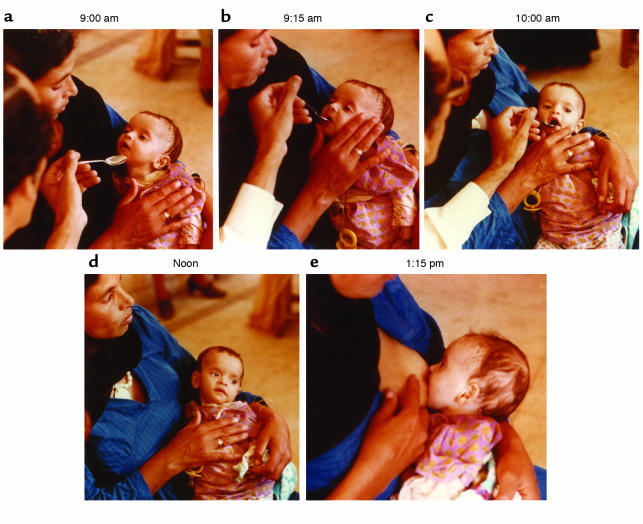Figure 2.
A three-month-old Egyptian boy in a rehydration treatment and training center is rescued with oral rehydration solution. By clinical estimate he had lost between five and ten percent of body weight in fluid. Normally in such centers the mother would give the fluid under a nurse’s supervision, but in this instance a physician is gaining direct experience. (a and b) Initially the infant must be coaxed to take the drink, which is given at an average rate of five cc (one teaspoon) a minute. (c) Within an hour, having absorbed needed electrolytes and water, he accepted the spoonfuls eagerly. (d) He lost interest at noon, once he had taken what he needed. Already the signs of dehydration — limpness, sunken eyes and flattening of the fontanelle — were gone. (e) Soon after, he was hungry for breast milk, which provided additional water and whose protein and carbohydrate nutrients promote movement of fluid from the intestine to the bloodstream, thus reducing the loss of diarrheal fluid. Figure kindly provided by Norbert Hirschhorn and reproduced with permission from Scientific American (33).

